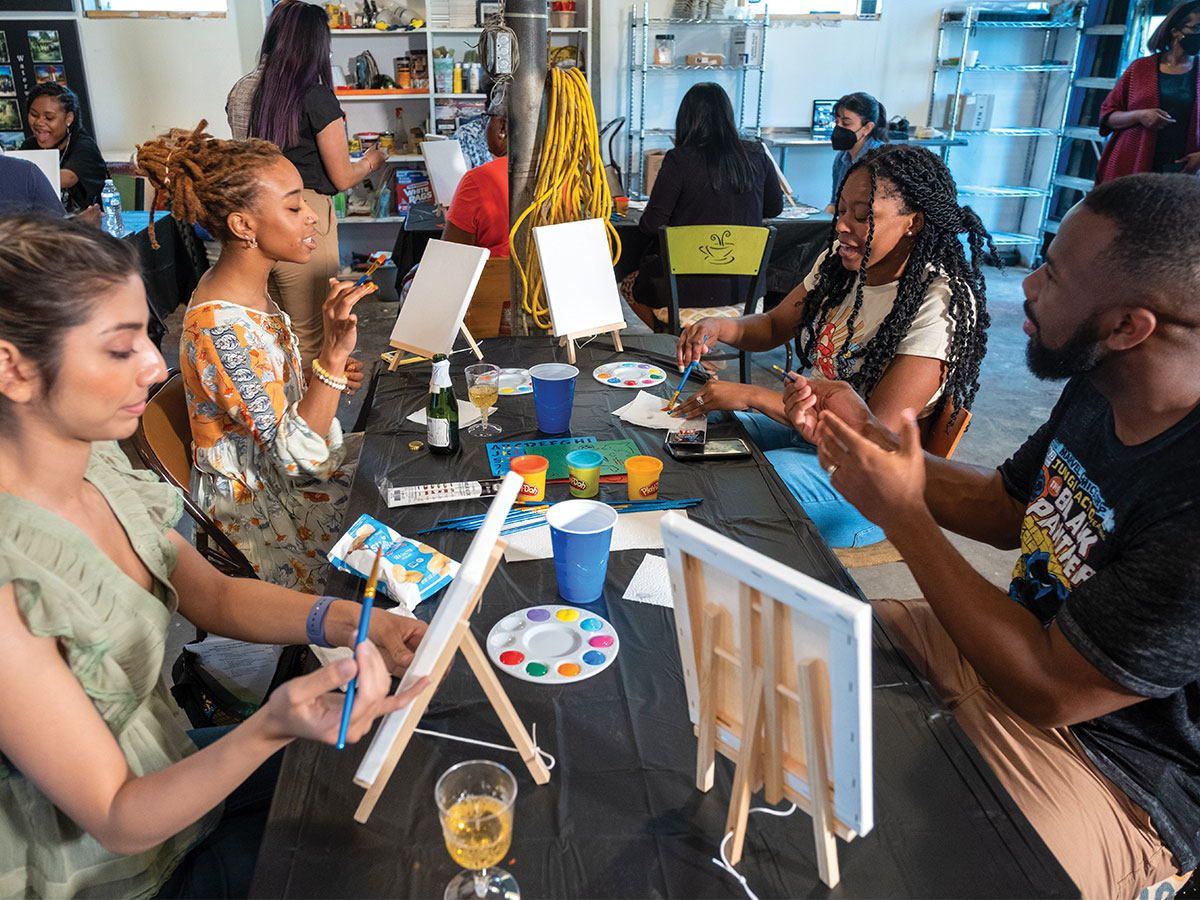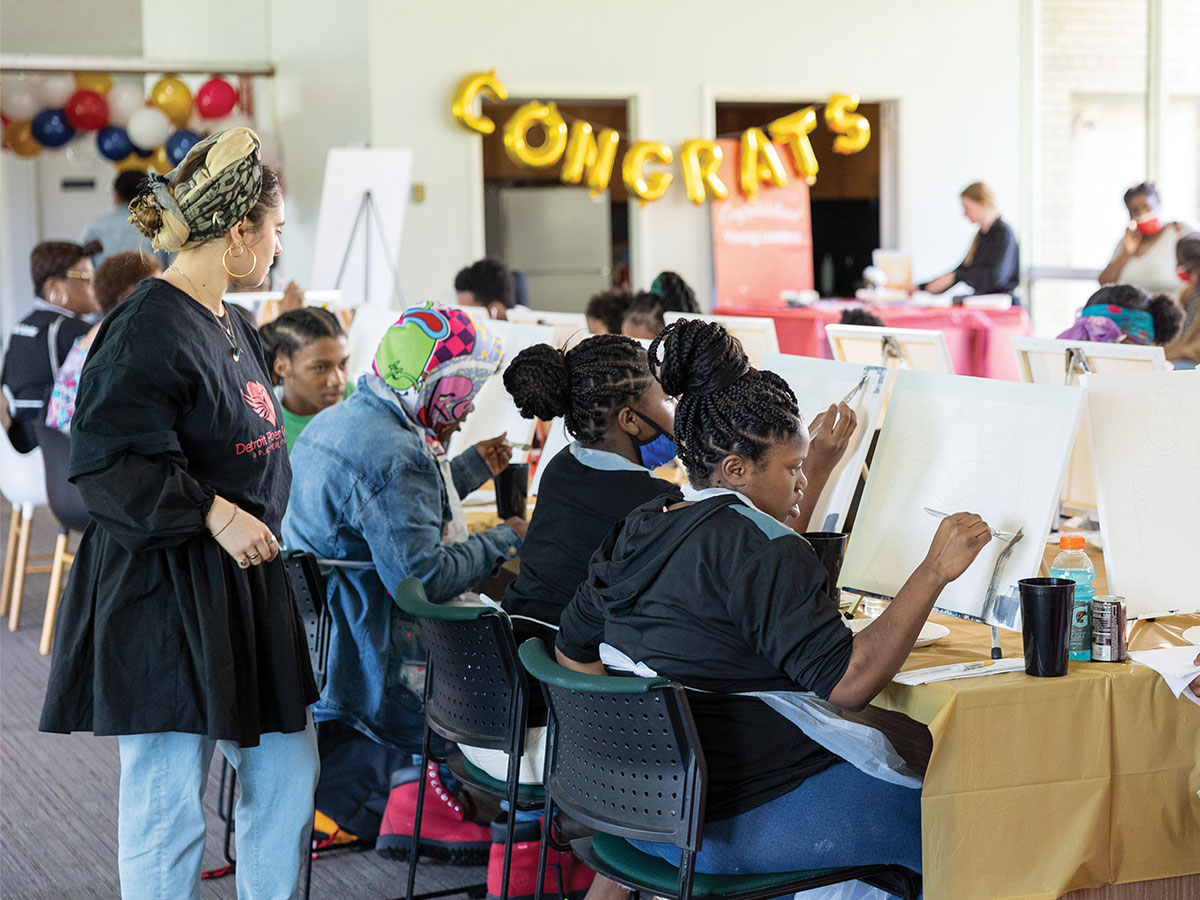
“How do we know if our philanthropic efforts have made a difference?” “What kind of difference have we made?” These are two common questions that foundation board members and business leaders ask their program staffs. Those leading funding and volunteer efforts often struggle to articulate their impact and tend toward defending their approach, their grantees, their staff, their processes, and their budget when answering. Sometimes they feel that the board or business leaders just don’t understand what it takes to achieve outcomes from grants, sponsorships, or employee volunteerism, or that perhaps they just don’t care.
At the same time, most funding leaders know of at least one foundation or corporation that not only answers the outcome achievement question easily but also has the ability to aggregate measurable results across initiatives and grant portfolios. This organization tells a clear impact story from philanthropic efforts with learnings for the future. What separates these organizations? Most funders (over 75 percent) are still in the very early stages of using outcomes data to improve impact from dollars and efforts. What keeps foundations and corporations from integrating a stronger outcomes capacity? How do they move their charity mindset to a focus on social impact? Is it simply a matter of time and resources at their disposal, or is there something more going on?
After working with hundreds of foundations, corporations, and other grantmakers over the last 20 years, I see the following reasons why the sector is still struggling with measuring outcomes:
- Motivation: Foundations and corporations have followed the tenants of the original grantmaker—government—with much of its general practices and approaches. From government, foundations and corporations learned to consider focusing on a need or issue, funding groups tackling that issue, and ensuring contract compliance and accountability from grantees. Grantmakers assume that by doing these things well, they are being good stewards of public and private resources. This approach becomes the focus of their interactions with the nonprofits they fund. With it, the only impact story they can tell about their philanthropy is how much they have given and what types of problems, programs, and people those dollars have gone towards.
- Clarity: Many funders feel that it is their grantees’ job to define and achieve outcomes from their efforts. They then find that each grantee reports something different. This inconsistency keeps funders from getting clarity around what outcomes they have achieved and leaves them no way to assess outcome success across a portfolio of dollars and efforts.
- Incentive: Funders may say that they want outcomes, yet their reward structure is often based on compliance and accountability, not outcome achievement, learnings, or improvement. There may be no consequence or learning discussion when outcomes fail to meet expectations, yet the same funder may penalize grantees for not delivering enough service activity, or for a late grant report. Currently, very few funders are offering nonprofits support for robust performance management (PM), which builds the organizations’ outcome capacity. These unbalanced (and often unexpressed) expectations have taught nonprofits to hide mistakes, follow the written rules, and share only the good news, fearing that their money could be taken away if things don’t go exactly as planned. Without an intentional focus on outcomes, funders simply hope that grantee will get better at achieving them, without considering their roles as funders in that achievement.
- Data use: Many funders are not using robust outcomes data in their grantmaking or volunteer efforts to inform their philanthropic strategies. At one extreme, some funders don’t even know what outcomes they are seeking before an initiative or program starts, and then wait until the initiative or program is over to gather what data they can. Others go to the other extreme and ask nonprofits to predict, track, and achieve outcomes they cannot possibly influence given the nonprofits’ program parameters and service time frame. Without clear, reasonable, and actionable links between strategy and measurable outcomes in all aspects of grantmaking, achieving social impact is difficult at best.
- Limiting beliefs: The largest cause of not moving from a charity mindset to a social impact mindset lies in how funders see themselves and the nonprofits they fund. This is where power struggles often originate. When funders see their roles from a limited perspective, the beliefs and behaviors they use may also be limiting their nonprofit partnerships and ultimately their social impact. A new perspective about a funder’s role in outcomes can create different beliefs and behaviors that empower them to continuously learn and improve. I have found that a belief-set change is often required before a funder will invest in creating and implementing a clear and measurable impact framework for giving.
As humans, our beliefs and expectations drive what we do. They shape our assumptions about our roles and values, define how we see ourselves and others, and influence the way in which we look for solutions. Our beliefs drive where we focus our attention and energy.
For example, if I believe a particular project or initiative I’m assigned to isn’t very good, I don’t expect it to get much support or encouragement from my organization and other key stakeholders. When it’s time to participate on the project, my beliefs limit the opportunities I see and the actions I take, including the support I offer, the preparation I put in, the risks I take, and the energy, creativity, and enthusiasm I bring. When, however, I believe that a project has incredible potential and is going to make a difference that I care about, I expect that we will be supported by everyone. When it’s time to work on the project, my expectations empower me to be more prepared, see more opportunities, take more risks, offer more support, and bring all of my energy and enthusiasm to the work.
By challenging and changing our limiting beliefs, we give ourselves the opportunity to shift our perspective and step into a more valuable role, with beliefs and behaviors that empower us to have the impact we truly seek.
Limiting perspectives can be hidden from our awareness, yet they often drive what we do. Limiting perspectives can keep funders focused on needs and dollars spent against them, instead of aiming all efforts and energy toward outcome achievement and improvement. A funder’s limiting beliefs can lead to telling negative stories to themselves and others to justify its role, beliefs, and behaviors. The stories I hear most often are that the funder is doing the best it can and is innocent of creating problems. It’s the nonprofits/board members/corporate leaders that are the villains, and the funder is helpless to change anything. Most of those stories are based in faulty conclusions and past viewpoints, not facts.
Empowering perspectives create the confidence and the focus required to link a funder’s strategy to measurable outcomes. It encourages a funder to act like a collaborative partner, and to gather and integrate its learnings, which in turn sustains its ability to achieve and improve outcomes from grantmaking. Funders feel energized and safe enough to interpret their experiences through more reasonable and fact-based stories, which increases trust and safety in their partnerships and in their ability to step into an open collaborative, learning mindset. They engage with their nonprofits to build their outcome capacity in intentional ways, understanding that the grantee’s results are also the funder’s results.
Below is a chart outlining two ends of the spectrum in funder perspectives. One extreme limits outcomes and the other one empowers them. Consider the differences in how funders see their roles and the beliefs and behaviors they tend to demonstrate around outcomes:
Funder Perspective
| Limiting | Empowering | |
| Role |
|
|
| Beliefs |
|
|
| Behaviors |
|
|
HOW TO MAKE THE SHIFT IN PERSPECTIVE
When we find ourselves telling ourselves stories about our situation from a limited perspective, we can stop and ask ourselves if the story is really true, and if it’s based on the facts or on perceptions. If it is not based on the facts (and it usually isn’t), we can step into the empowering perspective instead and see what new solutions or options are available. Owning our responsibility in the situation while better understanding where others are coming from are keys to moving from a limiting perspective to an empowering one.
Here are a few steps you can take when stuck in a limiting perspective:
- Identify the story you are telling yourself (including victim, villain, and helplessness)
- Go back to the facts (not your conclusions or judgements) and ask yourself the following five questions to determine if your story is really true:1. “What am I pretending not to know about my role in the problem?”
2. “Why would reasonable, rational, and decent people be acting as they are?”
3. “What is the new story I can tell myself to move toward empowered action?”
4. “How can I share what I really want in a way doesn’t make anyone wrong?”
5. “What can I do right now to move towards what I really want?”
Then go do that.
MOVING TOWARD CHANGE
Why are some funders able to change and others are not? Many funders make the move from a charity mindset to a social impact mindset when a new board chair or executive director come on board, bringing the passion and courage required to make organizational changes that can create a strong return on investment (ROI). Few long-time leaders are willing to make such sweeping change.
Focusing on social impact is a lasting strategy that leads to increased organizational and community value. And it helps to answer the question that stsarted this article, “How do we know if our philanthropic efforts have made a difference?” and “What kind of difference have we made?” As a funder of social impact, you know the difference you are making at both a project and portfolio level. You also know what is and isn’t working and when to adjust your strategy for higher results over time.
Regardless of your role, you can be a catalyst by sharing this article series with your leaders to inspire them to action. Belief coaching is a useful tool to help leaders move their perspectives from limiting to empowering—learn more about that at www.belief-works.
Most nonprofits could use support from their funding partners to build their outcomes capacity through robust performance management practices and systems. Many more funders are beginning to shift from a charity mindset to a social impact approach. As they make the move to outcomes, they are helping their nonprofit partners to make the move with them. How can that work best?
Check out the other two blogs in this series, all of which originally appeared on the Guidestar blog.


